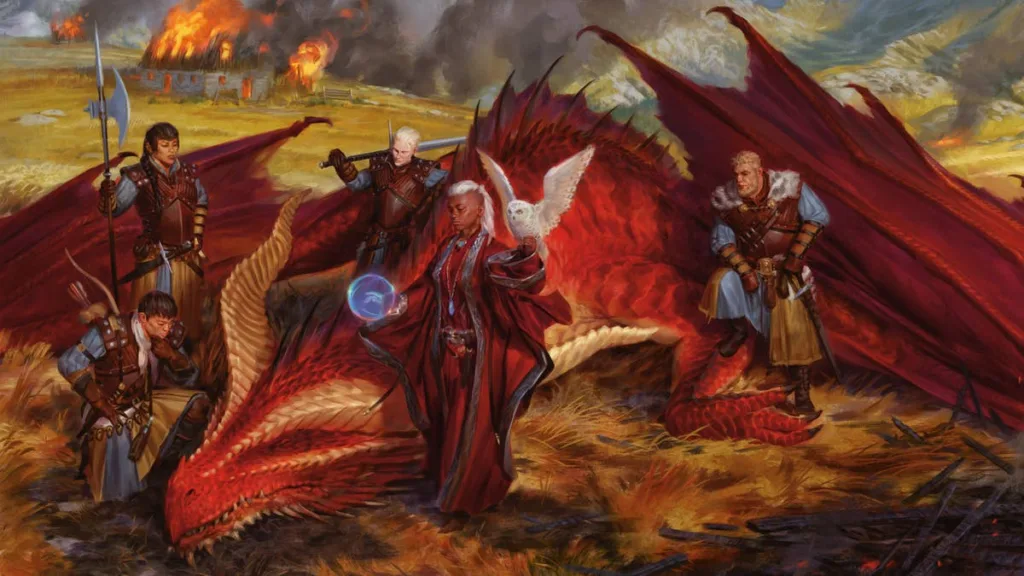In the world of Dungeons and Dragons, there are many conditions that can be inflicted upon a creature. One such condition is restrained. This condition can have a significant impact on a creature’s ability to fight and defend itself.
When a creature is restrained, its speed becomes 0. This means that it canot move from its current location. Additionally, the creature cannot benefit from any bonus to its speed, such as a haste spell or a monk’s unarmored movement feature. This can make it difficult for the creature to maneuver in combat or escape from danger.
Attack rolls against a restrained creature have advantage. This is because the creature is unable to move out of the way or defend itself as effectively. Conversely, the creature’s attack rolls have disadvantage. This is because it is unable to properly position itself to make an effective attack.
The creature also has disadvantage on Dexterity Saving Throws while restrained. This is because it is unable to dodge or move out of the way of danger as effectively as it normally would be able to.
One interesting aspect of the restrained condition is that it can be used to pin a creature grappled by you. To do so, you must make another grapple check. If you succeed, both you and the creature are restrained until the grapple ends. This can be a useful tactic in certain situations, as it effectively turns a grapple into a more powerful condition.
It is worth noting that restrained does not prevent forced movement. If a creature is pushed out of an area where it is restrained using forced movement, the condition would end. This means that restrained is not an infallible condition, and there are ways to overcome it.
The restrained condition can have a significant impact on a creature’s ability to fight and defend itself. It is important for players and Dungeon Masters to understand how this condition works and how it can be used in combat. By using this condition strategically, players can gain an advantage in combat and overcome their opponents.
What Does Restrained Mean In 5e?
In Dungeons and Dragons 5e, the condition of being “restrained” is a status effect that can be inflicted upon a creature. When a creature is restrained, its speed becomes 0, and it is unable to benefit from any bonuses to its speed. Additionally, any attack rolls made against the creature have advantage, while the creature’s own attack rolls have disadvantage. The restrained creature also has disadvantage on Dexterity saving throws. It should be noted that being restrained is a more severe condition than being grappled, as a restrained creature cannot move at all and is more vulnerable to attacks.

How Do You Restrain Something In 5e?
To restrain a creature in 5e, you need to use an ability, spell, or feature that grants the restrained condition. One way to do this is through grappling. When you successfully grapple a creature, you can use your action to try to pin it, which turns the grapple into the restrained condition for both you and the creature. Alternatively, some spells or features, such as the spell Web or the ability of a Giant Spider to web a creature, can also cause the restrained condition. Once a creature is restrained, it has its speed reduced to 0, attacks againt it have advantage, and its attacks have disadvantage. The restrained condition lasts until it is removed, which may require a specific action or spell.
Can I Cast Misty Step While Restrained?
You can cast Misty Step while restrained. Being restrained only affects your speed, and Misty Step does not require you to use your movement. Therefore, you can use Misty Step to teleport up to 30 feet to an unoccupied space that you can see within range, even if you are restrained. This can be a useful way to escape from a dangerous situation or reposition yourself in combat.
Does Forced Movement Break Restrained?
According to the rules as written (RAW) and likely intended (RAI), restrained does not prevent forced movement. If a creature is pushed or pulled out of an area where they are restrained using forced movement, the restrained condition would end as a result. Essentially, forced movement can break the restrained condition. It is worth noting, however, that specific spells, abilities, or conditions may have their own unique rules and exceptions to this general rule.
Conclusion
The restrained condition in D&D 5e can have a significant impact on a creature’s abilities durig combat. It reduces their speed to 0, makes them vulnerable to attacks, and hinders their ability to dodge incoming attacks. However, it is worth noting that restrained creatures can still use their actions to attack or cast spells if they have the ability to do so. Additionally, the condition can be ended if the creature is forced out of the area in which they are restrained. the restrained condition is a powerful tool for players and DMs alike, and can be used strategically to gain an advantage in battle.
